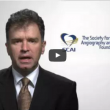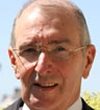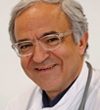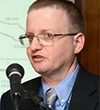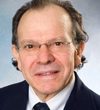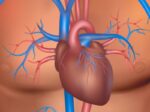Enhanced autologous bone marrow stem cell therapy improves clinical cardiac events in patients with heart failure and reduced ejection fraction resulting from ischemic heart disease and dilated cardiomyopathy. Globally, percutaneous intra-myocardial delivery of stem cells resulted in a significant 37% reduction in all-cause death, rehospitalization and sudden worsening for heart failure. This study randomized patients<a href="https://solaci.org/en/2016/04/08/ixcell-dcm-stem-cell-therapy-improves-outcomes-in-patients-with-heart-failure/" title="Read more" >...</a>
SCAI Releases Expert Consensus for Cardio-Oncology Patients Treated in Cardiac Catherization Labs
The Society for Cardiovascular Angiography and Interventions (SCAI) has released an expert consensus statement providing cardiologists, oncologists and internal medicine physicians guidance for treating patients facing concomitant cardiovascular disease and cancer. The document, “SCAI Expert Consensus Statement: Evaluation, Management, and Special Considerations of Cardio-Oncology Patients in the Cardiac Catherization Laboratory,” was released in Catheterization and Cardiovascular Interventions (CCI),<a href="https://solaci.org/en/2016/01/19/scai-releases-expert-consensus-for-cardio-oncology-patients-treated-in-cardiac-catherization-labs/" title="Read more" >...</a>
BIOPACE STUDY: biventricular pacing to prevent cardiac desynchronization
Single chamber pacemaker implantation leads to a desynchronization of ventricular depolarization. This study aims to evaluate the implant of biventricular versus univentricular pacemaker. 902 patients were included in the group with biventricular pacemaker and 908 in the univentricular pacing group. The primary objective was to evaluate the long-term mortality and needs hospitalization for heart failure.<a href="https://solaci.org/en/2015/06/24/biopace-study-biventricular-pacing-to-prevent-cardiac-desynchronization/" title="Read more" >...</a>
NECTAR HF: Chronic vagal stimulation for heart failure with low ejection fraction
The increased sympathetic activity and reduced parasympathetic tone are important pathophysiological contributors to the progression of heart failure and are associated with a worse prognosis. The aim of this study was to determine if vagus nerve stimulation is a promising strategy to modulate autonomic function, cardiac remodeling, and progression of heart failure. The NECTAR HF<a href="https://solaci.org/en/2015/06/24/nectar-hf-chronic-vagal-stimulation-for-heart-failure-with-low-ejection-fraction/" title="Read more" >...</a>
MADIT -CRT: Increased survival with resynchronization therapy plus defibrillator in patients with mild heart failure.
The MADIT -CRT study (Multicenter Automatic Defibrillator Implantation with Cardiac Resynchronization Therapy) had shown that early intervention with cardiac resynchronization therapy plus defibrillator in patients with electrical block pattern of complete left bundle branch was associated with a significant reduction of events in a mean follow-up of 2.4 years compared with the defibrillation therapy only.In<a href="https://solaci.org/en/2015/06/24/madit-crt-increased-survival-with-resynchronization-therapy-plus-defibrillator-in-patients-with-mild-heart-failure/" title="Read more" >...</a>
TOPCAT: Spironolactone in heart failure with preserved ejection fraction
The aldosterone blockade has shown benefit in the treatment of heart failure with systolic dysfunction after stroke. The aim of this study was to evaluate the effect of spironolactone in patients with preserved ejection fraction. This was a multicenter, randomized study that included 1722 patients in the spironolactone group and 1723 in the placebo group.<a href="https://solaci.org/en/2015/06/24/topcat-spironolactone-in-heart-failure-with-preserved-ejection-fraction/" title="Read more" >...</a>
Aldo-DHF: Aldosterone Receptor Blockade in Diastolic Heart Failure Treatment
Editorial Comment: Fifty per cent of all HF patients involves Diastolic Heart Failure or HF with conserved ventricular function. This study aimed at evaluating the efficacy and safety of 25mg spironolactone after a year of therapy. Results showed improved diastolic function, induced structural inverse remodelling, reduced neuroendocrine activation and reduced blood pressure (effects on cardiac<a href="https://solaci.org/en/2015/06/24/aldo-dhf-aldosterone-receptor-blockade-in-diastolic-heart-failure-treatment/" title="Read more" >...</a>
Resynchronization therapy is not beneficial in patients with heart failure and narrow QRS
Resynchronization therapy has shown benefits reducing morbidity and mortality in patients with heart failure and wide QRS. Many heart failure patients have mechanical dyssynchrony and this could be improved by resynchronization. The use of resynchronization “off label” in observational studies and small randomized studies raised up the need for a larger work to vouch this<a href="https://solaci.org/en/2015/06/24/resynchronization-therapy-is-not-beneficial-in-patients-with-heart-failure-and-narrow-qrs/" title="Read more" >...</a>
Hemodiafiltration lowers mortality in ACS patients and cardiac and renal dysfunction
Original title: Post-procedural Hemodiafiltration in Acute Coronary Síndrome Patients UIT Associated Renal and Cardiac Dysfunction unfergoing Urgent and Emergency Coronary Angiography. Reference: Giancarlo Marenzi, et al. Catherization and Cardiovascular Interention 2015 85:345-351 The association between acute coronary syndrome (ACS) and severe renal and cardiac dysfunction lowers survival. There is little information as to the best strategy to treat<a href="https://solaci.org/en/2015/03/29/hemodiafiltration-lowers-mortality-in-acs-patients-and-cardiac-and-renal-dysfunction/" title="Read more" >...</a>
Currently a patient receiving angioplasty is more likely to die from non-cardiac causes
Original title: Trends in cause of death after percutaneous coronary intervention. Reference: Spoon DB et al. Circulation. 2014; Epub ahead of print. This retrospective study evaluated the specific cause of death in 19077patients who received angioplasty in a center between 1991 and 2008. To perform the analysis, the track was divided into three time periods: 1991-1996, 1997-2002,<a href="https://solaci.org/en/2014/02/18/currently-a-patient-receiving-angioplasty-is-more-likely-to-die-from-non-cardiac-causes/" title="Read more" >...</a>

